Home>Furniture>Outdoor Furniture>How To Get On A Hammock
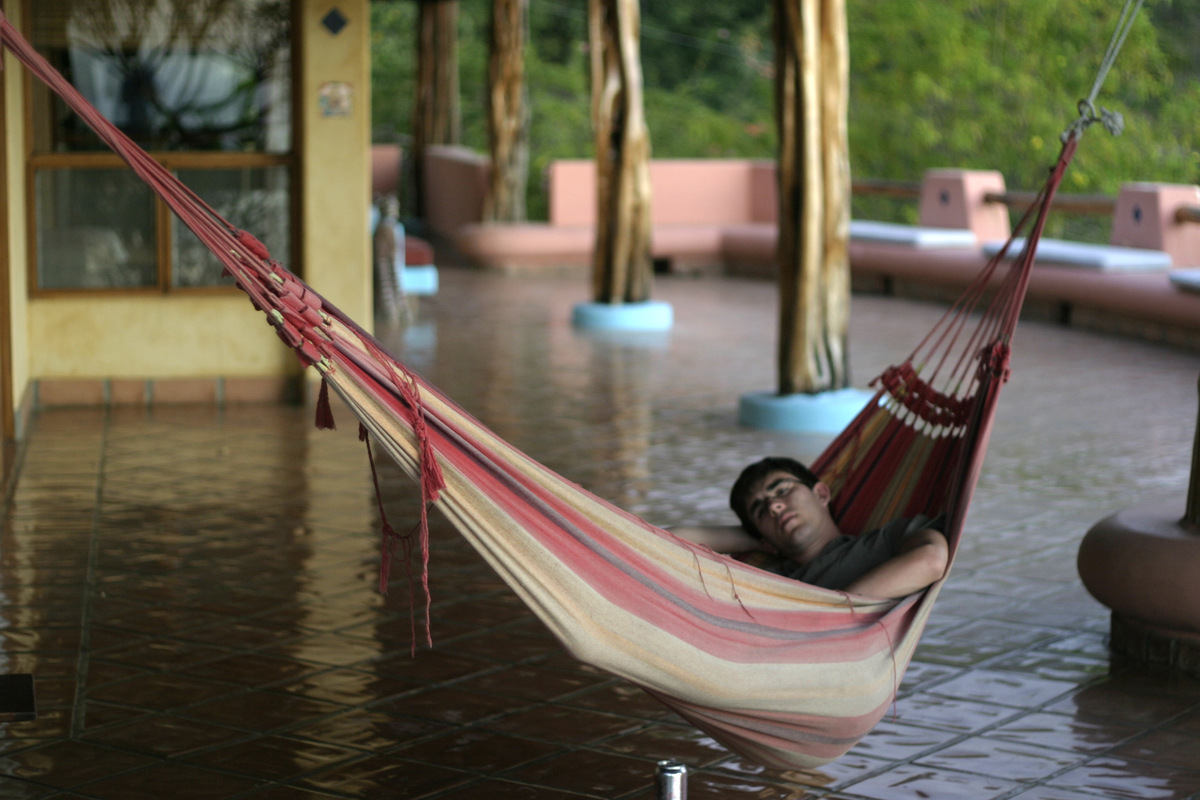

Outdoor Furniture
How To Get On A Hammock
Modified: April 23, 2024
Discover the secrets to effortlessly relax on a hammock with our expert tips and tricks. Find the perfect outdoor furniture for your ultimate comfort and relaxation.
(Many of the links in this article redirect to a specific reviewed product. Your purchase of these products through affiliate links helps to generate commission for Storables.com, at no extra cost. Learn more)
Introduction
Welcome to the relaxing world of hammocks! There’s nothing quite like lounging in a hammock, swaying gently in the breeze and enjoying the great outdoors. Whether you’re in your backyard, camping in the wilderness, or on a tropical beach, hammocks are the perfect way to unwind and escape from the hustle and bustle of everyday life.
But getting on a hammock can be a bit of a challenge if you’re not familiar with it. Don’t worry, though – in this article, we’ll guide you through the entire process, from choosing the right hammock to finding the perfect position for maximum comfort. So grab a cold drink, kick back, and let’s dive in!
Before you embark on your hammock adventure, it’s important to understand that not all hammocks are created equal. There are various types to choose from, including rope hammocks, fabric hammocks, and hammock chairs, each offering a different experience and level of comfort. Consider your preferences and needs when selecting your hammock.
Once you’ve chosen the right hammock for you, the next step is to find the ideal location for it. While hammocks are versatile and can be set up in different environments, it’s essential to select a spot that is safe, sturdy, and convenient. Remember, the quality of your hammock experience depends on the location you choose.
Setting up a hammock may seem daunting, but with the right instructions, it can be a breeze. We’ll walk you through the process step by step, ensuring you have a secure and stable setup. Follow our guidelines, and you’ll be relaxing in your hammock in no time.
Now comes the part that a lot of people find challenging – getting on the hammock itself. Don’t worry; we’ve got you covered. We’ll share some tips and techniques to make it easier for you. Once you’re on the hammock, finding the right position is crucial for ultimate relaxation. We’ll provide some guidance on how to position yourself comfortably so that you can truly unwind.
Finally, we’ll offer some additional tips and precautions to ensure a safe and pleasant hammock experience. From weight limits and proper maintenance to mosquito protection and avoiding common mistakes, our tips will help you make the most of your hammock adventures.
So, get ready to embrace the joy of hammocking. Whether you’re a new enthusiast or a seasoned pro, this article will equip you with the knowledge and skills to have a fantastic hammocking experience. Let’s begin the journey to relaxation and bliss!
Key Takeaways:
- Embrace the joy of hammocking by choosing the right one, setting it up securely, and finding your perfect position for ultimate relaxation and bliss in the great outdoors.
- Prioritize safety, inspect your hammock regularly, and immerse yourself in the tranquility of disconnecting from technology and embracing the gentle sway for a rejuvenating hammock experience.
Read more: How To Get Mold Out Of A Hammock
Choosing the Right Hammock
When it comes to choosing the right hammock, there are a few factors to consider to ensure you find the perfect fit for your needs and preferences. Here are some key considerations to keep in mind:
- Materials: Hammocks are made from various materials, including cotton, polyester, nylon, and even eco-friendly options like organic cotton and recycled materials. Each material comes with its own set of advantages and disadvantages, so think about factors like durability, breathability, and comfort when selecting the material.
- Type: There are different types of hammocks to choose from, such as rope hammocks, fabric hammocks, and hammock chairs. Rope hammocks are classic and provide a traditional look, while fabric hammocks offer more comfort and are available in various colors and patterns. If you’re looking for a hammock that allows you to sit upright, a hammock chair might be the perfect choice.
- Size: Consider the size of the hammock based on the number of people who will be using it. If you’re planning to share the hammock with a partner or a friend, go for a double or extra-wide option. For solo relaxation, a single-sized hammock should suffice.
- Weight Capacity: Always check the weight capacity of the hammock to ensure it can safely support the intended users. Hammocks typically have weight limits between 250 and 500 pounds, so consider the combined weight of the people who will be using it.
- Portability: If you plan on taking your hammock on camping trips or other outdoor adventures, consider its portability. Look for hammocks that are lightweight, compact, and come with a carry bag or storage pouch for ease of transport.
- Accessories: Hammocks can be enhanced with various accessories, such as straps, suspensions systems, and mosquito netting. Consider any additional features you may want to add to your hammock to enhance your comfort and convenience.
When choosing a hammock, it’s also helpful to read reviews and seek recommendations from others who have firsthand experience with different brands and models. This can provide valuable insights into the quality, durability, and overall satisfaction of the hammock.
By taking these factors into account, you can select a hammock that meets your specific preferences and needs, ensuring a delightful lounging experience for years to come.
Selecting the Right Location
Once you’ve chosen the perfect hammock, the next step is to find the ideal location to set it up. The location you choose can greatly impact your hammocking experience, so it’s important to consider the following factors:
- Space: Look for an area with enough space to accommodate the length and width of your hammock. Make sure there are no obstacles such as trees, fences, or furniture that could interfere with the hammock’s setup or limit your movement while using it.
- Safety: Prioritize safety when selecting a location for your hammock. Avoid areas with loose or unstable ground, as this can pose a risk of tipping or falling. Choose a spot that provides a stable and secure anchor point, such as sturdy trees or hammock stands. Ensure the trees or posts you use are healthy and capable of supporting the weight of the hammock.
- Privacy: Consider how much privacy you desire while relaxing in your hammock. If you prefer solitude, look for a secluded area in your backyard or choose a campsite that offers more secluded spots. On the other hand, if you enjoy people-watching or socializing, opt for a location with more foot traffic.
- Shade and Sun Exposure: Depending on your preferences, choose a location that either provides ample shade or allows for plenty of sun exposure. If you live in a hot climate, a shaded area will help keep you cool and comfortable. However, if you’re looking to soak up some vitamin D, consider a spot that receives plenty of sunlight.
- Scenic View: If you have the luxury of choice, why not select a location with a scenic view? Whether it’s overlooking a lake, nestled in the midst of nature, or facing a beautiful landscape, a picturesque setting can enhance your relaxation and enjoyment.
- Accessibility: Consider the accessibility of the location. If you’re planning to frequent your hammock often, choose a spot that is easily accessible from your home or campsite. This will encourage you to use it more frequently and make the process of getting to your hammock more convenient.
Keep in mind that the location you choose may vary depending on your specific circumstances and preferences. For example, if you’re camping, you’ll need to adapt to the available natural resources and campsite regulations.
Lastly, always respect the environment and follow leave-no-trace principles. Avoid damaging trees or leaving any trace of your presence when setting up your hammock. By being mindful of your surroundings, you can enjoy the beauty of nature while minimizing your impact on the environment.
By considering these factors, you can find the perfect location to set up your hammock, creating an inviting and serene space where you can fully relax and unwind.
Setting Up the Hammock
Now that you’ve selected the right location for your hammock, it’s time to set it up. Follow these step-by-step instructions to ensure a secure and comfortable setup:
- Find the Right Anchor Points: If you’re using trees as anchor points, choose healthy and sturdy trees that are at least 12-15 feet apart. Ensure the trees have a diameter of at least 6-12 inches and are free from any sharp branches or obstructions. If you’re using a hammock stand, make sure it is on a level surface.
- Attach the Straps or Ropes: If your hammock comes with straps or ropes, wrap them around each tree and adjust the length as needed. Make sure the straps are placed at a height that allows for a comfortable sitting or lying position.
- Secure the Hammock: If your hammock has carabiners or hooks, attach them to the straps or ropes. Ensure they are securely fastened to prevent any accidents or unexpected disconnections while in use.
- Test the Stability: Before fully committing your weight to the hammock, give it a gentle test. Apply some pressure and check for any signs of instability or stretching. A well-set hammock should provide a firm and supportive surface.
- Adjust the Height and Tension: Once you’re confident in the stability, adjust the height and tension of your hammock to your preference. Some people prefer a lower height for easy access, while others enjoy a higher position for better views. Experiment and find what works best for you.
- Check for Proper Suspension: Ensure the hammock is properly centered between the anchor points. It should be evenly balanced and not pulled too tight on one side. Adjust the straps or ropes as needed to achieve a balanced suspension.
Remember, the setup process may differ slightly depending on the type and brand of hammock you have. Always refer to the manufacturer’s instructions for specific guidance related to your hammock.
If you’re using a hammock stand, the setup process is usually straightforward. Follow the instructions provided with the stand and make sure to secure any locking mechanisms or fasteners properly. Ensure the stand is on a level surface to ensure stability.
Once your hammock is set up, give it a final inspection to ensure everything is secure and safe. Avoid jumping into the hammock or putting excessive force on it to prevent any damage or accidents.
By following these steps, you’ll be able to set up your hammock with ease, ready to embark on a relaxing and enjoyable hammocking experience.
Getting On the Hammock
Now that your hammock is set up and ready to go, it’s time to get on and start enjoying the comfort and relaxation it offers. Here are some tips to help you easily and safely get on your hammock:
- Approach from the Side: Stand beside the hammock, facing it, and grip the edges of the hammock in front of you. This will provide stability and support as you transition onto the hammock surface.
- Take a Seat: Lower yourself down onto the edge of the hammock, keeping your weight evenly distributed. Aim to sit down gently rather than plopping onto the hammock to maintain balance and stability.
- Swing Your Legs In: Once you’re seated on the edge of the hammock, swing your legs into the hammock while maintaining a firm grip on the edges. Slowly shift your weight from a sitting position to a reclining position.
- Find Your Balance: As you shift your weight into a reclining position, use your body’s natural movements to find a comfortable balance. You may need to adjust and shift your weight slightly until you find the sweet spot where you feel supported and stable.
- Use Your Arms for Support: As you lie back in the hammock, use your arms to support yourself and help maintain balance. You can place your hands beside you, slightly behind you, or cross them over your chest, depending on your comfort preference.
- Take Your Time: Don’t rush the process! Allow yourself some time to adjust and find the right position. Gently sway or rock back and forth to settle into the hammock and get used to its movement and support.
It’s worth noting that getting onto a hammock may require a bit of practice, especially if you’re new to it. Don’t worry if it feels a bit unfamiliar or unsteady at first – with a little practice, you’ll quickly get the hang of it (pun intended!).
If you have difficulty getting onto a hammock, you may find it helpful to have someone assist you by offering a helping hand or stabilizing the hammock as you climb on. Additionally, using a hammock with spreader bars can make it easier to get in and out of the hammock, as they provide a more stable entry point.
Remember, safety is important. Take your time, be mindful of your movements, and listen to your body’s cues. With practice, you’ll be able to effortlessly and confidently get on and off your hammock, paving the way for many relaxing moments ahead.
When getting on a hammock, sit on the edge and slowly lower yourself down, keeping your weight centered. Then, swing your legs onto the hammock and find a comfortable position. Avoid jumping onto the hammock to prevent tipping.
Read more: How To Choose A Hammock
Finding the Right Position
Once you’re comfortably settled in your hammock, the next step is to find the right position for optimal relaxation and comfort. Here are some tips to help you find your perfect hammock position:
- Angle of Relaxation: Adjust the angle at which your body lies in the hammock. Experiment with different angles to find what feels most comfortable for you. Some people prefer a flatter position for a more supportive and upright posture, while others enjoy a more reclined position for a laid-back and relaxed experience.
- Body Alignment: Align your body along the centerline of the hammock to distribute your weight evenly. This will help maintain balance and prevent strain on specific areas of your body. Stretch out and allow your body to settle into a natural and comfortable position.
- Head and Neck Support: Ensure your head and neck are adequately supported. You can use a small pillow or roll up a towel to place under your head for added comfort. Adjust the height of your head support based on your preferences and comfort requirements.
- Leg Position: Experiment with different leg positions to find what feels most comfortable for you. You can keep your legs outstretched, bend your knees, or even tuck your feet under you. Find a position that relaxes your leg muscles and allows for proper circulation.
- Arm Placement: Position your arms in a way that feels natural and relaxing. You can rest them by your side, cross them over your chest, or even place them behind your head. Choose an arm position that releases tension and promotes relaxation.
- Swinging or Stillness: Decide whether you prefer a gentle rocking motion or if you prefer to stay still. You can achieve a gentle sway by pushing off with your feet or by using a hammock with a built-in rocking motion. Experiment with both options to find what brings you the most tranquility.
Keep in mind that everyone’s preferences and comfort levels differ, so it’s important to listen to your body and adjust accordingly. It may take a bit of trial and error to find your ideal position, so be patient and explore different variations until you discover what works best for you.
Once you find your perfect position, take some time to fully relax and enjoy the serenity of your hammock. Whether you’re reading a book, meditating, or simply taking a well-deserved nap, the right position will enhance your overall hammock experience and provide the ultimate relaxation.
Remember, hammocks are versatile and can accommodate various body sizes and shapes. Don’t be afraid to experiment and make small adjustments to find the position that suits you best. The beauty of a hammock lies in its ability to adapt to your unique comfort and relaxation needs.
Relaxing and Enjoying the Hammock
Now that you’ve found the perfect position in your hammock, it’s time to fully relax and enjoy the tranquil and enveloping embrace of this ultimate relaxation spot. Here are some tips to enhance your hammock experience:
- Disconnect from Technology: Use your time in the hammock as an opportunity to disconnect from technology and immerse yourself in the present moment. Put away your phone, turn off notifications, and allow yourself to fully unwind without any distractions.
- Embrace the Sway: Let the gentle movement of the hammock lull you into a state of relaxation. Embrace the swaying motion and allow it to soothe your body and mind. This gentle rocking can evoke a sense of calmness and peace.
- Engage your Senses: As you lie in your hammock, take a moment to engage your senses and fully experience your surroundings. Listen to the sounds of nature, feel the gentle breeze on your skin, and take in the sights and scents around you. Immerse yourself in the present moment and embrace the beauty of your surroundings.
- Practice Mindfulness or Meditation: Use your hammock as a space for mindfulness or meditation. Focus on your breathing, observe your thoughts without judgment, and allow yourself to be fully present in the moment. The hammock’s cocoon-like embrace can create a serene and peaceful environment for practicing mindfulness.
- Read a Book or Listen to Music: If you enjoy reading or listening to music, bring along a book or your favorite tunes to enhance your hammock experience. Immerse yourself in a captivating story or allow the songs to transport you to a state of blissful relaxation.
- Soak Up Vitamin D: If your hammock is located in a sunny spot, take advantage of the opportunity to soak up some vitamin D. The gentle warmth of the sun combined with the serene comfort of the hammock can create a truly blissful experience.
- Share the Experience: Hammocks are often large enough to accommodate more than one person. If you prefer to share the experience, invite a loved one, friend, or family member to join you. Bask in each other’s company as you both enjoy the relaxation and tranquility of the hammock.
Remember, the ultimate goal of your hammock experience is to let go of stress, relax your mind and body, and recharge your energy. Allow yourself to fully embrace the peace and serenity that the hammock provides.
Whether you’re taking a nap, having a moment of solitude, or engaging in a leisure activity, immersing yourself in the hammock’s embrace will transport you to a world of tranquility and bliss.
So, take the time to indulge in the pleasures of your hammock, allowing yourself to unwind, rejuvenate, and fully enjoy this wonderful outdoor haven.
Tips and Precautions
While hammocks offer a delightful and relaxing experience, it’s important to keep some tips and precautions in mind to ensure your safety and maximize your enjoyment. Here are some essential guidelines to follow:
- Inspect Your Hammock: Before each use, carefully inspect your hammock for any signs of wear or damage. Check the straps, ropes, carabiners, and fabric for any fraying, tears, or weak spots. If you notice any issues, refrain from using the hammock until it is repaired or replaced.
- Consider Weight Limit: Be mindful of the weight limit specified by the manufacturer. Exceeding the weight limit can compromise the integrity of the hammock and increase the risk of accidents. Always refer to the product specifications to ensure you’re within the safe weight range.
- Choose a Suitable Location: Ensure that the location you choose for your hammock is free from any hazards or obstructions. Avoid setting up your hammock near sharp objects, open flames, or areas with a high risk of falling debris. Additionally, be cautious of the terrain to prevent accidents or potential damage to the hammock.
- Be Mindful of Safety: When getting on or off the hammock, always use caution and take your time. Do not jump into the hammock or swing excessively, as this can lead to accidents or injuries. Be aware of your surroundings and any potential hazards.
- Protect Yourself from Insects: If you’re hammocking in an area with mosquitoes or other biting insects, take measures to protect yourself. Use insect repellent, consider using a hammock with a built-in mosquito net, or set up additional bug netting to create a bug-free zone.
- Properly Store and Maintain: When you’re not using your hammock, take the time to properly store and maintain it. Protect it from UV rays, moisture, and harsh weather conditions to prolong its lifespan. Follow the manufacturer’s instructions for cleaning and storage.
- Take Weather Conditions into Account: Be cautious of the weather conditions before setting up your hammock. Strong winds, heavy rain, or lightning storms can pose a safety risk. Take down your hammock and seek shelter during inclement weather to prevent damage to the hammock or potential injury.
- Experiment with Accessories: Consider adding accessories to enhance your hammock experience. Accessories such as pillows, blankets, or suspension systems can improve comfort and convenience. Experiment with different options to find what works best for you.
- Share the Hammock Etiquette: If you’re hammocking in public spaces or shared areas, be mindful of others who may also want to enjoy the pleasure of a hammock. Limit your usage time if there is high demand, and always clean up after yourself, leaving the area as you found it.
By following these tips and precautions, you can ensure a safe and enjoyable hammock experience. Remember, safety should always be a top priority, allowing you to fully relax and enjoy the tranquility and bliss that a hammock offers.
Conclusion
Congratulations! You’ve now learned the essential steps to fully enjoy and make the most of your hammock experience. By choosing the right hammock, selecting the perfect location, and setting it up correctly, you’ve laid the foundation for relaxation and tranquility.
Remember, a hammock is more than just a piece of outdoor furniture – it’s a gateway to a world of relaxation and escape from the stresses of everyday life. Whether you’re seeking a cozy corner in your backyard, a peaceful spot in the wilderness, or a heavenly oasis on a tropical beach, a hammock can transport you to a state of blissful serenity.
As you settle into your hammock, focus on finding your preferred position, embracing the gentle sway, and allowing yourself to fully disconnect from the outside world. Use this time to unwind, rejuvenate, and recharge your mind and body.
Throughout your hammock journey, remember to prioritize safety and follow the recommended tips and precautions. Regularly inspect your hammock, practice safe usage, and be mindful of your surroundings. By doing so, you’ll ensure your own well-being and prolong the lifespan of your hammock.
Lastly, don’t forget to share the joy of hammocking with others. Invite friends and loved ones to experience the tranquility and bliss alongside you. It’s a perfect opportunity to connect, create memories, and enjoy the simple pleasures of life in good company.
So, whether you’re gazing at the stars, enjoying a captivating book, or simply embracing the beauty of nature, let your hammock be your sanctuary of relaxation. Immerse yourself in its comfort and let it become your personal oasis, providing you with a place to unwind, reflect, and find peace.
Now, it’s time to embark on your hammock adventure. So go ahead, find your perfect spot, set up your hammock, and let the relaxation begin. Embrace the joy of hammocking and create countless unforgettable moments of tranquility in the great outdoors. Happy hammocking!
Frequently Asked Questions about How To Get On A Hammock
Was this page helpful?
At Storables.com, we guarantee accurate and reliable information. Our content, validated by Expert Board Contributors, is crafted following stringent Editorial Policies. We're committed to providing you with well-researched, expert-backed insights for all your informational needs.


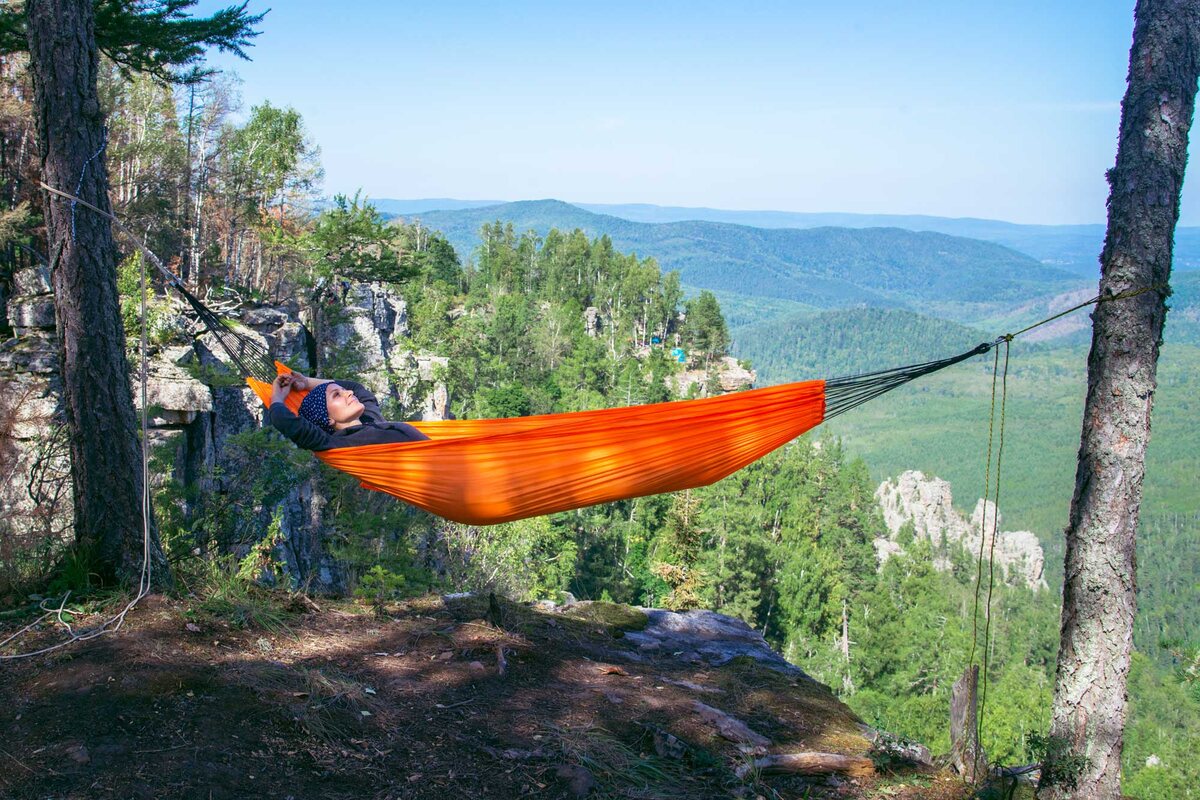

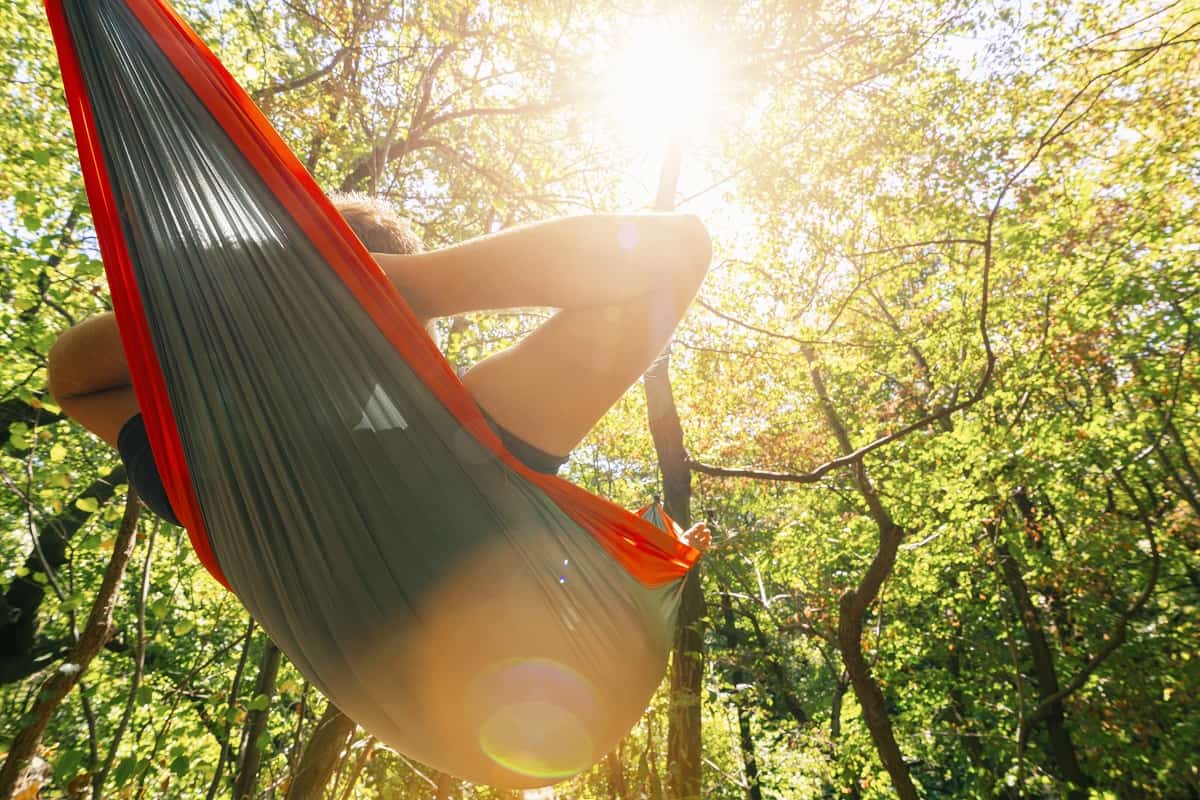
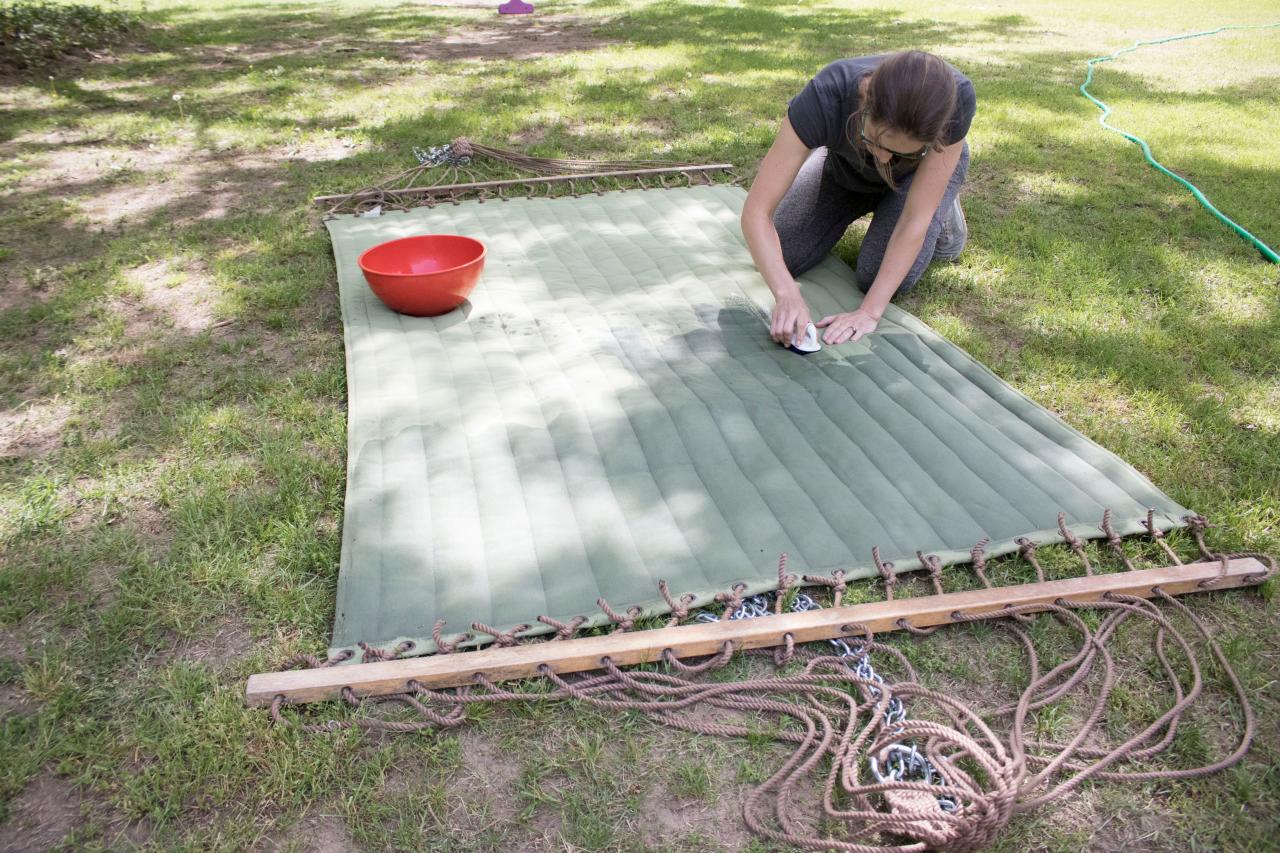
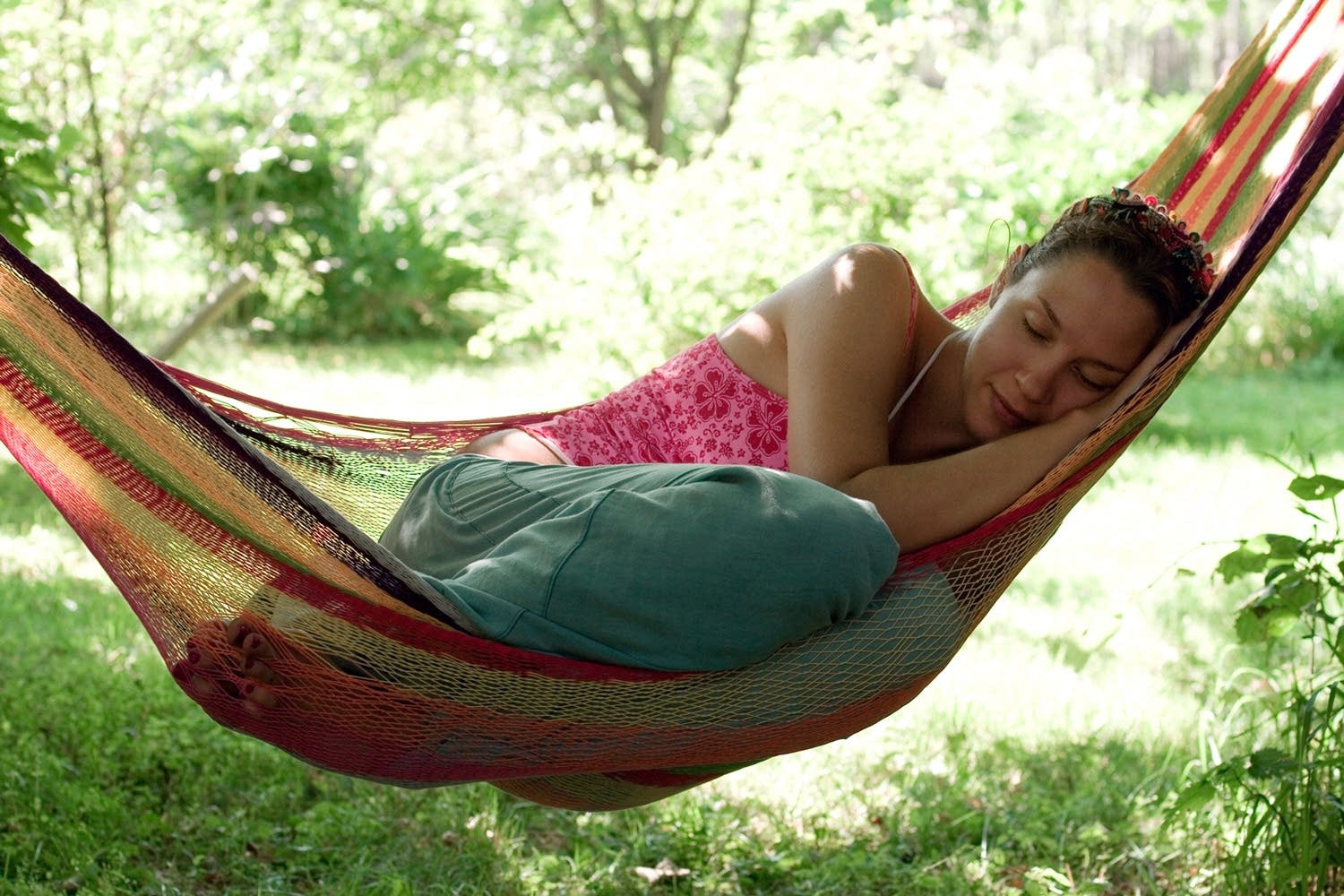
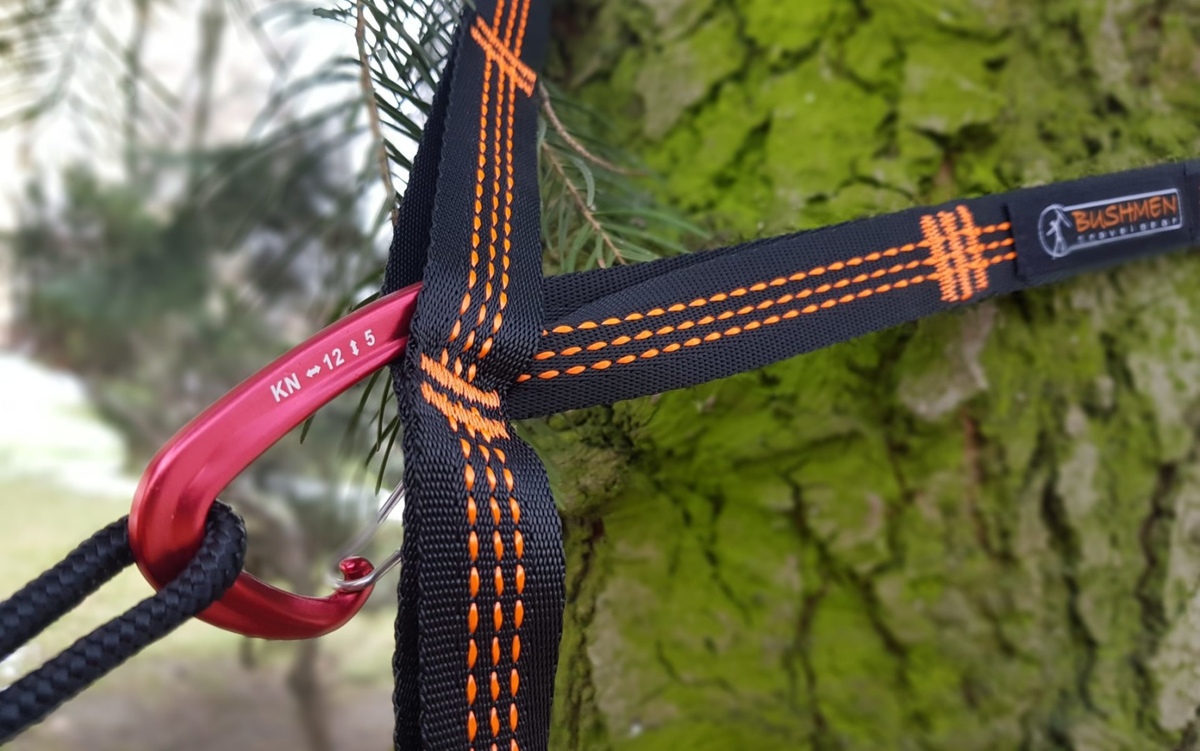


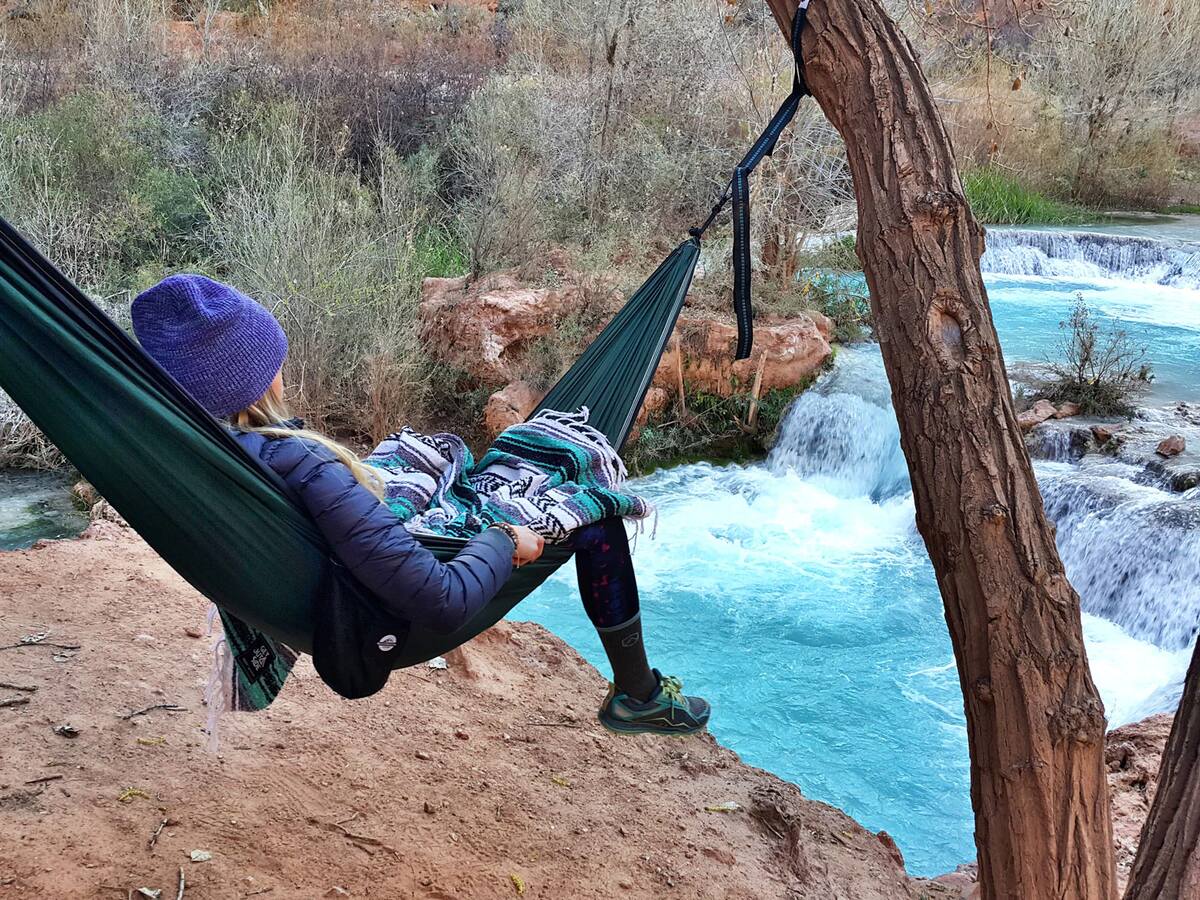

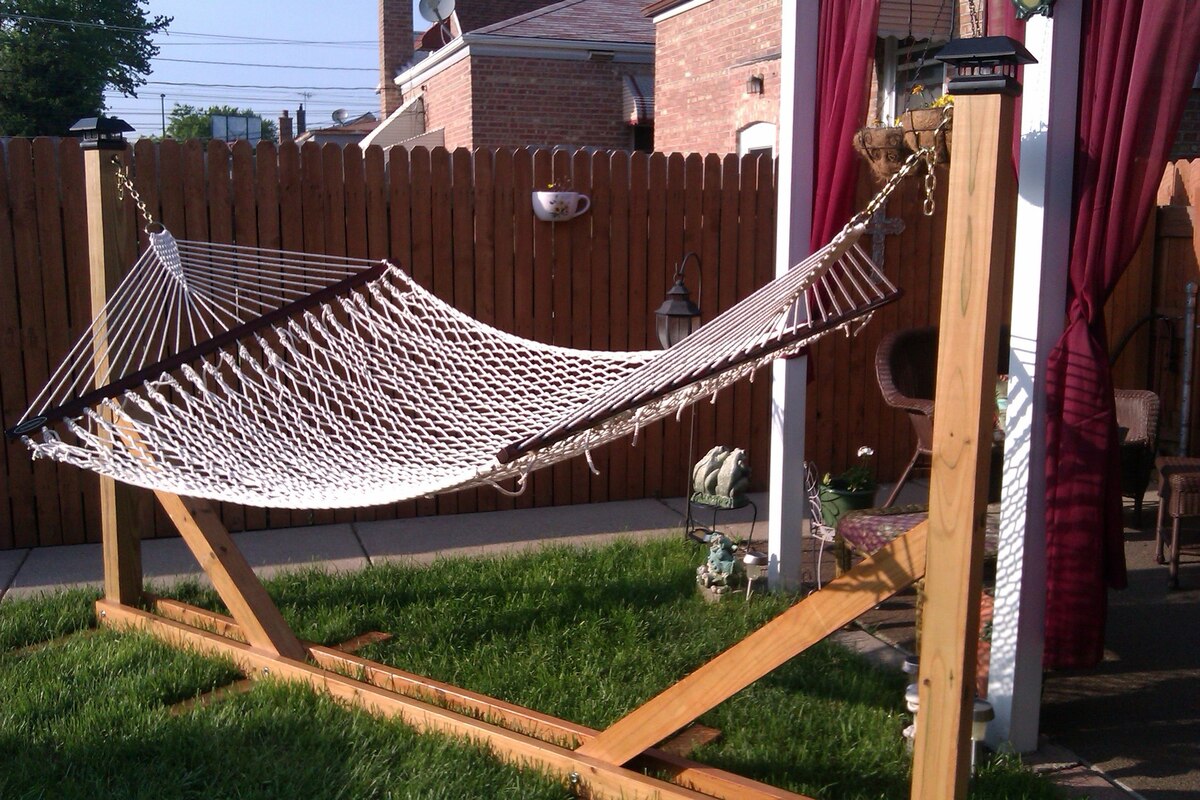


0 thoughts on “How To Get On A Hammock”